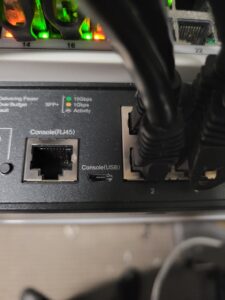 Introduction: In the era of advanced technology and increasing reliance on home networks for various tasks, encountering network issues can be frustrating. While most common network problems can be easily resolved, there are a few lesser-known culprits that may be affecting your home network performance. Take a deep dive with us as we explore ten unique factors that might be playing a role in your network troubles.
Introduction: In the era of advanced technology and increasing reliance on home networks for various tasks, encountering network issues can be frustrating. While most common network problems can be easily resolved, there are a few lesser-known culprits that may be affecting your home network performance. Take a deep dive with us as we explore ten unique factors that might be playing a role in your network troubles.
1. Aged Firmware: Outdated firmware in your router can cause compatibility issues and hinder network performance. Ensure you regularly update your router’s firmware to stay ahead of potential problems.
2. DNS Hiccups: Domain Name Server (DNS) servers play a vital role in translating websites’ domain names to IP addresses. Opting for unreliable or overloaded DNS servers might result in sluggish network speeds. Switching to reliable and fast DNS servers like Google DNS or Cloudflare DNS can help mitigate this issue.
3. Overburdened Network: An overcrowded network can impede your home network’s performance. Multiple devices simultaneously accessing the network can lead to congestion, slower speeds, and intermittent connectivity. Consider implementing Quality of Service (QoS) settings to prioritize critical devices or upgrade your internet package.
4. Sneaky Signal Interference: Unbeknownst to many, various household objects can interfere with Wi-Fi signals. Mirrors, metal objects, thick walls, and even larger appliances can disrupt signal strength. Assess your network placement and consider relocating your router to minimize interference.
5. Struggling Network Adapter: Outdated or malfunctioning network adapters can lead to poor network connectivity and speed. Ensure your devices are equipped with up-to-date and compatible network adapters to prevent this bottleneck.
6. Invasive Malware: Malware isn’t limited to affecting computers; it can also target routers. Malicious code injected into routers can compromise network security, degrade performance, and even redirect your internet traffic. Regularly update your router’s firmware, change default login credentials, and install reputable security software to ward off potential malware threats.
7. Unoptimized Wi-Fi Channels: Interference from neighboring wireless networks can slow down your Wi-Fi speeds. Using tools like Wi-Fi analyzers, identify the least congested channels and switch your Wi-Fi router to an optimized channel for improved performance.
8. Weather Woes: Extreme weather conditions such as heavy rain, intense lightning storms, or severe winds can physically damage or disrupt network equipment, leading to intermittent or complete network outages. Safeguard your networking equipment by ensuring proper insulation and protection from the elements.
9. Cryptic Cable Faults: Damaged or frayed network cables can cause connectivity issues. Ensure all cables are securely connected, properly insulated, and free from physical damage to maintain a reliable network connection.
10. Resource-Hungry Background Apps: Often overlooked, resource-intensive background applications on your devices can consume a significant portion of your network’s bandwidth, leading to slower internet speeds for other devices. Monitor and manage these apps, limiting their impact on your network performance.
Conclusion: Network issues can stem from various unexpected factors. By understanding the less common culprits affecting your home network, you can troubleshoot more effectively and address these issues proactively. Remain vigilant, keep your devices updated, and make informed decisions to ensure a stable and optimized home network experience.


